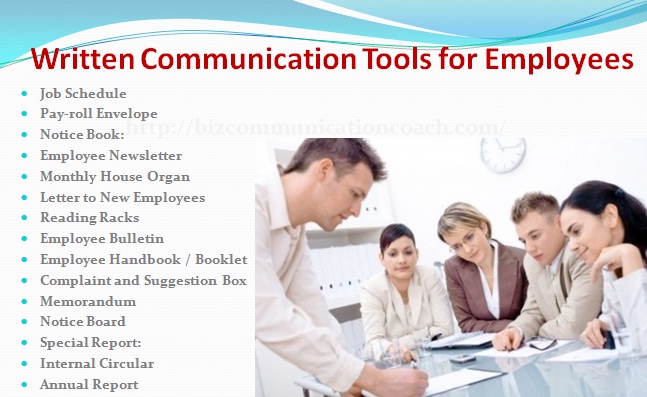Once you've developed your
marketing strategy, there is a "Seven P Formula" you should use to continually evaluate and reevaluate your business activities. These seven are: product, price, promotion, place, packaging, positioning and people. As products, markets, customers and needs change rapidly, you must continually revisit these seven Ps to make sure you're on track and achieving the maximum results possible for you in today's marketplace.
Product
To begin with, develop the habit of looking at your product as though you were an outside marketing consultant brought in to help your company decide whether or not it's in the right business at this time. Ask critical questions such as, "Is your current product or service, or mix of products and services, appropriate and suitable for the market and the customers of today?"
Whenever you're having difficulty selling as much of your products or services as you'd like, you need to develop the habit of assessing your business honestly and asking, "Are these the right products or services for our customers today?"
Is there any product or service you're offering today that, knowing what you now know, you would not bring out again today? Compared to your competitors, is your product or service superior in some significant way to anything else available? If so, what is it? If not, could you develop an area of superiority? Should you be offering this product or service at all in the current marketplace?
Prices
The second P in the formula is price. Develop the habit of continually examining and reexamining the prices of the products and services you sell to make sure they're still appropriate to the realities of the current market. Sometimes you need to lower your prices. At other times, it may be appropriate to raise your prices. Many companies have found that the profitability of certain products or services doesn't justify the amount of effort and resources that go into producing them. By raising their prices, they may lose a percentage of their customers, but the remaining percentage generates a profit on every sale. Could this be appropriate for you?
Sometimes you need to change your terms and conditions of sale. Sometimes, by spreading your price over a series of months or years, you can sell far more than you are today, and the interest you can charge will more than make up for the delay in cash receipts. Sometimes you can combine products and services together with special offers and special promotions. Sometimes you can include free additional items that cost you very little to produce but make your prices appear far more attractive to your customers.
In business, as in nature, whenever you experience resistance or frustration in any part of your sales or
marketing plan, be open to revisiting that area. Be open to the possibility that your current pricing structure is not ideal for the current market. Be open to the need to revise your prices, if necessary, to remain competitive, to survive and thrive in a fast-changing marketplace.
Promotion
The third habit in marketing and sales is to think in terms of promotion all the time. Promotion includes all the ways you tell your customers about your products or services and how you then market and sell to them.
Small changes in the way you promote and sell your products can lead to dramatic changes in your results. Even small changes in your advertising can lead immediately to higher sales. Experienced copywriters can often increase the response rate from advertising by 500 percent by simply changing the headline on an advertisement.
Large and small companies in every industry continually experiment with different ways of advertising, promoting, and selling their products and services. And here is the rule: Whatever method of marketing and sales you're using today will, sooner or later, stop working. Sometimes it will stop working for reasons you know, and sometimes it will be for reasons you don't know. In either case, your methods of marketing and sales will eventually stop working, and you'll have to develop new sales, marketing and advertising approaches, offerings, and strategies.
Place
The fourth P in the marketing mix is the place where your product or service is actually sold. Develop the habit of reviewing and reflecting upon the exact location where the customer meets the salesperson. Sometimes a change in place can lead to a rapid increase in sales.
You can sell your product in many different places. Some companies use direct selling, sending their salespeople out to personally meet and talk with the prospect. Some sell by telemarketing. Some sell through catalogs or mail order. Some sell at trade shows or in retail establishments. Some sell in joint ventures with other similar products or services. Some companies use manufacturers' representatives or distributors. Many companies use a combination of one or more of these methods.
In each case, the entrepreneur must make the right choice about the very best location or place for the customer to receive essential buying information on the product or service needed to make a buying decision. What is yours? In what way should you change it? Where else could you offer your products or services?
Packaging
The fifth element in the marketing mix is the packaging. Develop the habit of standing back and looking at every visual element in the packaging of your product or service through the eyes of a critical prospect. Remember, people form their first impression about you within the first 30 seconds of seeing you or some element of your company. Small improvements in the packaging or external appearance of your product or service can often lead to completely different reactions from your customers.
With regard to the packaging of your company, your product or service, you should think in terms of everything that the customer sees from the first moment of contact with your company all the way through the purchasing process.
Packaging refers to the way your product or service appears from the outside. Packaging also refers to your people and how they dress and groom. It refers to your offices, your waiting rooms, your brochures, your correspondence and every single visual element about your company. Everything counts. Everything helps or hurts. Everything affects your customer's confidence about dealing with you.
When IBM started under the guidance of Thomas J. Watson, Sr., he very early concluded that fully 99 percent of the visual contact a customer would have with his company, at least initially, would be represented by IBM salespeople. Because IBM was selling relatively sophisticated high-tech equipment, Watson knew customers would have to have a high level of confidence in the credibility of the salesperson. He therefore instituted a dress and grooming code that became an inflexible set of rules and regulations within IBM.
As a result, every salesperson was required to look like a professional in every respect. Every element of their clothing-including dark suits, dark ties, white shirts, conservative hairstyles, shined shoes, clean fingernails-and every other feature gave off the message of professionalism and competence. One of the highest compliments a person could receive was, "You look like someone from IBM."
Positioning
The next P is positioning. You should develop the habit of thinking continually about how you are positioned in the hearts and minds of your customers. How do people think and talk about you when you're not present? How do people think and talk about your company? What positioning do you have in your market, in terms of the specific words people use when they describe you and your offerings to others?
In the famous book by Al Reis and Jack Trout,
Positioning, the authors point out that how you are seen and thought about by your customers is the critical determinant of your success in a competitive marketplace. Attribution theory says that most customers think of you in terms of a single attribute, either positive or negative. Sometimes it's "service." Sometimes it's "excellence." Sometimes it's "quality engineering," as with Mercedes Benz. Sometimes it's "the ultimate driving machine," as with BMW. In every case, how deeply entrenched that attribute is in the minds of your customers and prospective customers determines how readily they'll buy your product or service and how much they'll pay.
Develop the habit of thinking about how you could improve your positioning. Begin by determining the position you'd like to have. If you could create the ideal impression in the hearts and minds of your customers, what would it be? What would you have to do in every customer interaction to get your customers to think and talk about in that specific way? What changes do you need to make in the way interact with customers today in order to be seen as the very best choice for your customers of tomorrow?
People
The final P of the marketing mix is people. Develop the habit of thinking in terms of the people inside and outside of your business who are responsible for every element of your sales,
marketing strategies, and activities.
It's amazing how many entrepreneurs and businesspeople will work extremely hard to think through every element of the marketing strategy and the marketing mix, and then pay little attention to the fact that every single decision and policy has to be carried out by a specific person, in a specific way. Your ability to select, recruit, hire and retain the proper people, with the skills and abilities to do the job you need to have done, is more important than everything else put together.
In his best-selling book, Good to Great, Jim Collins discovered the most important factor applied by the best companies was that they first of all "got the right people on the bus, and the wrong people off the bus." Once these companies had hired the right people, the second step was to "get the right people in the right seats on the bus."
To be successful in business, you must develop the habit of thinking in terms of exactly who is going to carry out each task and responsibility. In many cases, it's not possible to move forward until you can attract and put the right person into the right position. Many of the best business plans ever developed sit on shelves today because the [people who created them] could not find the key people who could execute those plans.





